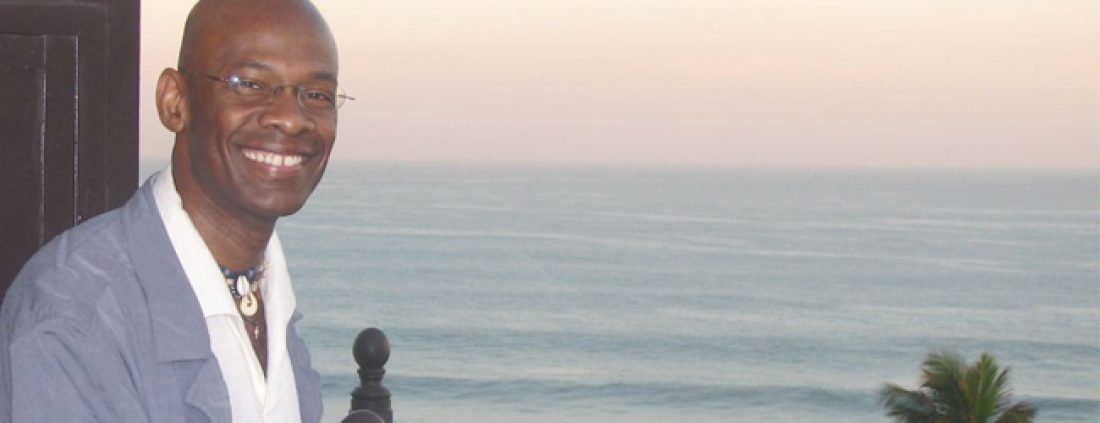MIT Prof. Michel DeGraff describes his hopes for MIT’s involvement in helping to rebuild the educational infrastructure in Haiti.
Most Haitians I know have a precise and often tragic story about what they were doing when the earthquake hit on Tuesday, January 12, 2010, at 4:53PM.
In my case the story is not so tragic, yet it seems relevant to the agenda of this symposium: I was in my office at MIT on a long-distance phone call with Haiti, talking with my dear friend and linguistics colleague Professor Yves Dejean (“Papa Iv”). Like many previous conversations with Papa Iv, our conversation that day was about various efforts to improve education in Haiti and break down the country’s language barrier whereby French, spoken by a small minority of Haitians, is used as an instrument for “élite closure” to the detriment of the vast majority of Haitians—those who speak Kreyòl only. Our conversation was abruptly interrupted. At that time I just thought it was a bad phone line or faulty signal. I tried to call back several times, then I gave up and went to pick up my son Nuriel at afterschool. When I came back home with Nuriel, I got a phone call from another Haitian friend, calling from New Jersey with dramatic news of the earthquake.
And it took me a couple of weeks to have a full account of the losses and damages incurred by my family, relatives, friends and colleagues in Haiti. At 82 years of age, Professor Dejean himself fared well–his life and the lives of his household members were spared and his home still stands. But their lucky fate stands in sharp contrast with that of so many in Haiti. And when it comes to education, most academic establishments in Port-au-Prince crumbled. As for Haiti’s main linguistics institution, the Faculté de Linguistique Appliquée (FLA), its building in Port-au-Prince totally pancaked in the earthquake, killing more than 200 affiliates, including the dean of the linguistics faculty, the vice-dean, alongside professors, students and staff. The FLA is the institution that has been hit the hardest among the academic units of Haiti’s State University, and this is an institution that myself as a linguist I had and still have many ties with.
Also lost in the rubble is most of the FLA’s library, its precious archives and documentation, its computer labs and so on. Our linguistics colleagues in Haiti are still grieving, but they are already on their courageous way toward building a better linguistics program on new grounds (literally and figuratively). It’s been an inspiration to witness how our FLA colleagues, along with other compatriots, are already working on curriculum reform, faculty development, new infrastructure and library resources, partnerships with universities abroad, etc. They dream, and are working hard toward, a linguistics program that will be better than the one that existed before the earthquake. The FLA linguists—professors and students alike—are hoping that the reconstruction of their institution will allow it to leapfrog into the 21st century. And similar hopes prevail throughout academic institutions in Haiti.
I am optimistic that the leapfrogging of Haitian schools and universities into the 21st century will have a major impact on the socio-economic landscape of the country as a whole. As for Haitian linguists, they have a key role to play in the future training of educators, teachers, language planners, etc. By and large, FLA linguists have a deep understanding of Haiti’s socio-linguistic situation and how language attitudes and language policies affect educational and economic opportunities. So they have much to contribute to efforts that enlist Haiti’s linguistic and cultural assets toward a level-playing field—one where Haiti’s national language of Kreyòl can become an effective instrument to promote socio-economic progress for the general population.
In a related vein, one constant theme across conversations with university colleagues at the FLA and at other academic institutions in Haiti is the need for technology-enabled tools for easier access to course materials, research documents, etc., and for collaboration with overseas partners. It’s ironic that Haitian Creole is among the best studied Creole languages, and Haitian Creole data have been used for some rather spectacular and momentous theoretical claims about the human mind’s capacity for Language. Yet many descriptions of Haitian Creole suffer from substantial empirical gaps and theoretical fallacies. This state of affairs can be improved with more active contribution from the Kreyòl linguistics experts at the FLA. These are the linguists who have most intimate and reliable knowledge of Kreyòl linguistics structures. Yet it is ironic that Haitian Creole still holds little academic respect in Haiti and that the FLA linguists themselves have had relatively little opportunity to contribute to the Kreyòl-related scientific debates in international research journals.
So here’s another silver lining to the current tragedy in post-earthquake Haiti: The use of innovative educational technology and open resources—partnerships of the sort that we will discuss at the MIT-Haiti symposium—will create productive partnerships between MIT faculty and Haitian universities. These partnerships will help bridge the gap between FLA linguists and the global linguistics research community. The latter has so much to benefit, in scientific terms, from the FLA linguists’s first-hand empirical and theoretical insights on Haitian Creole. In turn, these partnerships will help endow Kreyòl with much increased cultural and scientific capital—of the sort that may increase its value on Haiti’s linguistic market and help further undermine Haiti’s language barrier.
Such partnerships would thus constitute one beautiful example, among others, where working with Haitian universities through collaboration based on mutual respect holds great promise for the common social and scientific good—across the North-South divide.



